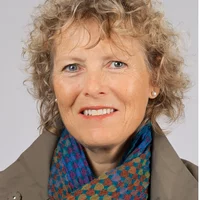Antarctic Blog
16 March 2017
Bouvetoya: Last stop before Cape Town
by Julia Schmale
Position 54°26′S, 3°24′E
With just two more weeks to go, we headed towards Bouvetoya, a Norwegian island in the middle of the South Atlantic. Bouvetoya is among the most remote islands on Earth based on the long distance to the surrounding land masses. The island is covered by a glacier and is rather small, roughly 8 km in length and 4 km wide. It generates its own weather which basically means that most of the time it is covered in clouds. Due to its location in the furious fifties, the winds are generally little welcoming. All in all, chances are rather low of visiting the island.
Position 54°26′S, 3°24′E
With just two more weeks to go, we headed towards Bouvetoya, a Norwegian island in the middle of the South Atlantic. Bouvetoya is among the most remote islands on Earth based on the long distance to the surrounding land masses. The island is covered by a glacier and is rather small, roughly 8 km in length and 4 km wide. It generates its own weather which basically means that most of the time it is covered in clouds. Due to its location in the furious fifties, the winds are generally little welcoming. All in all, chances are rather low of visiting the island.
Two days around the island were planned and needed. The first day was extremely windy and only two field parties were able to land with the helicopter on standby. So only quick moss, water, snow and rock samples could be collected because the helicopter cannot wait longer than 30 minutes with the running motor on the island before refueling becomes necessary. The following day, winds had calmed down but clouds were hanging low. Nevertheless, the ice core drilling team and I could land on the western soft slope of the island to sample for roughly five hours before the weather turned bad again. Again, we were unbelievably lucky with the weather and most science projects were able to collect their samples. With the successful visit of Bouvetoya, we have almost completed the circumnavigation of Antarctica. Twelve weeks of sailing are already behind us, and only a couple of days are left before completing the journey in Cape Town on the 19th of March.
Scientifically, however, the voyage is far from being completed. Ahead of us wait the crossing of the Antarctic and Subantarctic fronts. Fingers crossed that the wind comes from a favorable direction so we do not need to measure ship exhaust gas. Three stations of seven hours are planned along the way, before, between and after the fronts. During the stations the ship normally faces the wind and we can hope for good data.
back to all blog entries
Scientifically, however, the voyage is far from being completed. Ahead of us wait the crossing of the Antarctic and Subantarctic fronts. Fingers crossed that the wind comes from a favorable direction so we do not need to measure ship exhaust gas. Three stations of seven hours are planned along the way, before, between and after the fronts. During the stations the ship normally faces the wind and we can hope for good data.
back to all blog entries


